The Best Paint for Plastic
Hello Graphics Fairy creators. Today we will be discovering the Best Paint for Plastic. With so many painting options available on the market, which one to choose? It is especially important to use the proper paint that is specifically designed for your plastic painting projects. If you have ever tried to paint something plastic, and the paint cracked and/or peeled off, you will understand why it is important to begin with the correct product. We will learn about the different paints crafters use on plastics. Plus, I will be sharing my favorite method to paint plastic as well.
Painting Plastic
My first conundrum was figuring out how to visually convey painting plastic to you. I decided that painting plastic spoons was the best way. Just looking at the above image lets you know exactly what we are doing, I hope. You may have been frustrated with paint peeling when you tried to paint plastic in the past. It should be noted that painting plastic is not as easy as painting something like wood or paper, for example, because plastic is a non-porous material whereas wood and paper are porous. Paint does not adhere as well to a non-porous surface. Therefore, it can take some practice to become proficient at painting plastic. As noted above, it is important to use paint that is specifically designed for painting plastic. Some important things to consider when selecting paint for your plastic items are: the finish, the detail needed, and the drying time. Below is a plastic food container that Diana painted and added a Graphics Fairy label. You can find her Recycled Craft Ideas post HERE.
To Prime or Not
Most paint options available today for plastic do not require a primer for adequate adherence. A primer can be used if the paint requires it or if you feel the need to add it. It will not be detrimental to do so. A good option for smooth surfaces is Rust-Oleum Specialty Plastic Primer Spray. For irregular surfaces you can use clear gesso.
To Spray or Brush
There are two schools of thought on spraying versus brushing when painting plastic. Mostly the decision is based on final look and feel of the piece. Spraying gives a more even and smooth appearance on plastic. Brushing can leave brush marks depending on the product used. Sometimes the crafter may desire the texture left by brush marks. Self-leveling properties of some paints make them more preferred over others. It should be noted that a lot of crafters use paints with an air brush on plastic. So it is truly a matter of preference and what you are trying to create that will influence your choice. TIP: In my experiments, you need more than 1 coat of paint to obtain a smooth finish on plastic. (see 1 coat on spoon above) In the mermaid art below, you see an example of painted plastic where brush marks and texture became part of the art.
Different Paints for Painting Plastic
Although there is no one particular paint that can be considered the ‘best’ for painting plastic, there are several different types that are designed for plastic, which work very well. Painting plastic requires patience and practice. The two basic categories of paints for plastic are brush on paints and spray paints. We will explore some of these in this tutorial about painting plastic, with our emphasis on crafts rather than other kinds of indoor or outdoor items such as furniture. But most of this information will apply to larger projects as well.
Plus, there are several different reasons to paint plastic. There are DIY projects, like lawn furniture and picture frames. And there are craft projects, like assemblage, miniature and model painting. So many things to do. Here are some of the paints I found at a local craft store, but there are many other paints for plastic that can be ordered online.
Acrylic Paint
One common method for painting plastic crafts is with brush-on acrylics. Most acrylic paints are water-based. Once the fully dry, they are water-resistant. Many artists declare that FolkArt Multi-Surface Acrylic paint or DecoArt Americana Acrylic Multi Surface paint are the best for plastic, although there are numerous other choices available. Multi-Surface paint has a smooth and ‘creamy’ consistency that is easy to use. It is water-based with easy clean up, plus is non-toxic and dishwasher safe when cured. Many brilliant color choices are available as well. The finish is a beautiful satin sheen. Matte and satin finishes are typically the preferred sheen for plastic. Below is two coats of Multi Surface paint applied to the plastic spoon with a brush.
The Vallejo Model Color is also a great choice. I really enjoyed working with it. It is pricer than craft paint and comes in a smaller bottle, but it is smooth and flows easily off the brush. I will be working with this paint again.
Lacquer Paint
Model and figure painters prefer a solvent-based acrylic lacquers. They are a splendid choice because they are self-priming and dry harder than acrylics and enamels. Plus, they are opaque and self-leveling. TIP: Thin with the solution recommended by the manufacturer of the paint. These paints use what is known as a two-coat system, with the first coat priming and sealing the surface and the second providing additional protection and an even finish. The first layer coat needs to dry completely before applying the second coat. This method also produces excellent adhesion. Mr. Hobby Solvent-Based Acrylic Lacquer (seen below) is one of the favorites of modelers and is suitable for both brush painting and air-brushing. Citadel, Speedpaint, and Liquitex Acrylic Ink are also great choices for painting and getting into the crevices of these figures.
Enamel Paint
Enamel paints used with brushes is another alternative for painting plastic. They usually provide a smoother finish than acrylics. Enamels are both water and oil-based, but most crafters use water-based ones because oil-based enamels have a strong odor, emit toxic fumes, and are harder to clean. The chemical composition of enamel paint is designed for non-porous surfaces, making it an ideal choice for a material like plastic. It sticks to plastic extremely well, holds up to washing, and is very resistant to chipping. Thin to reduce brush marks with the oil-based needing special thinners. Enamels take longer to fully dry and cure than acrylics at 6-24 hours versus average 2-3 for acrylic paints. Enamels have less variety of colors than acrylics but offer a glossier finish. You should wear a mask when working with these paints. On the spoon below, I had a difficult time smoothing the paint because I did not have the thinner. To be fair, I believe that the small bottle of paint I purchased was old and drying. TIP: Make sure you buy the proper thinner when selecting the enamels.
One option for a highly regarded set of enamel paints is Testors Oil-based Enamel Paints 7 Metallic Color Set 1. The 1/4 oz size paints in vibrant Metallic colors of blue, gold, copper, red, silver, steel, and aluminum are perfect for plastic surfaces.
Spray Paint
There are many options to choose from for spray painting plastic. Most of the best plastic spray paints available today are designed especially for plastic and include a primer combined with the paint, eliminating the need for a separate primer. They have archival properties primarily because only the highest quality pigments are incorporated. This helps prevent the paint from becoming brittle, resulting in cracking, flaking, and peeling. Spray paint is typically dry to the touch in approximately 20 minutes. When spray painting don’t spray too closely. The can should be held 8″-12″ away from the item and a slow and steady back and forth motion should be utilized. If the paint requires applying multiple coats, spray one light coat at a time and let each coat dry thoroghly before going to the next. This is by far my favorite paint and method for applying paint to plastic. It is easy, quick, and smooth. Other paints can be applied over it. Let’s look at a couple of the best spray paints for plastic:
Rust-Oleum Painter’s Touch 2X Ultra Cover Although not exclusively used for plastic, this enamel-based paint plus primer spray paint is superb for painting your plastic crafts. The coverage is considered excellent, meaning only one coat is generally all you need. Dozens of color choices and multiple finishes are both appealing and durable. It has an “any-angle” spray tip, which allows for inverting or turning the can sideways.
Krylon Fusion All-In-One Spray Paint This is another paint not just for use on plastic, but is also perfect for your plastic painting projects. It is an acrylic- enamel-based paint plus primer also known for a pretty and long lasting finish, with over 60 color choices and eight finishes from semi-gloss to matte.
Tips for Painting Plastic
First let’s look at some of the basics involved with preparation and the necessary tools required. Ensure that the surface to be painted is cleaned, dry, and free of dust. Clean the surface with alcohol before painting. Make sure you get into all the crevices and recesses. Allow the surface to dry. Check to see if the item is free of cracks or other damage. If a small crack is found after painting is completed, a fine tip brush with acrylic paint can usually finish it off well. When spray painting, you will need to be in a well-ventilated area. It is always a good idea to gather your equipment together before you get started so that you can devote your full attention to the project at hand. A basic list should include:
- Paint
- Paint Brushes (unless using Spray Paint)
- Rollers (if doing a large project)
- Masking Tape
- Water
- A Scrub Brush
- A Cloth
- Rags
- Sandpaper
- Rubbing Alcohol
Here are some general steps to consider to get started:
- Clean the surface with a scrub brush, especially if there is existing flaking paint. First scrub dry, then add soapy water to the process.
- To provide a surface that will give the paint good adherence, gently sand the smooth plastic with fine grit sandpaper.
- Clean the sanding dust thoroughly off of the surface, using a dry cloth followed by a wet rag with rubbing alcohol or mineral spirits to remove fine particles.
- Tape areas that you do not want painted with masking tape if applicable.
Brushes for Painting Plastic
Different sizes and types of brushes can be used to paint plastic depending on what your objectives are. Different brush types are applicable to either acrylic or enamel paints. Synthetic brushes work well with acrylic paints. Natural bristle brushes work best with enamel and solvent-based paints. China bristles almost eliminate brush marks. Round brushes are generally used, but flat, angle, and others are also suitable. Fine tip ones like liner brushes are great for fine lines and details.
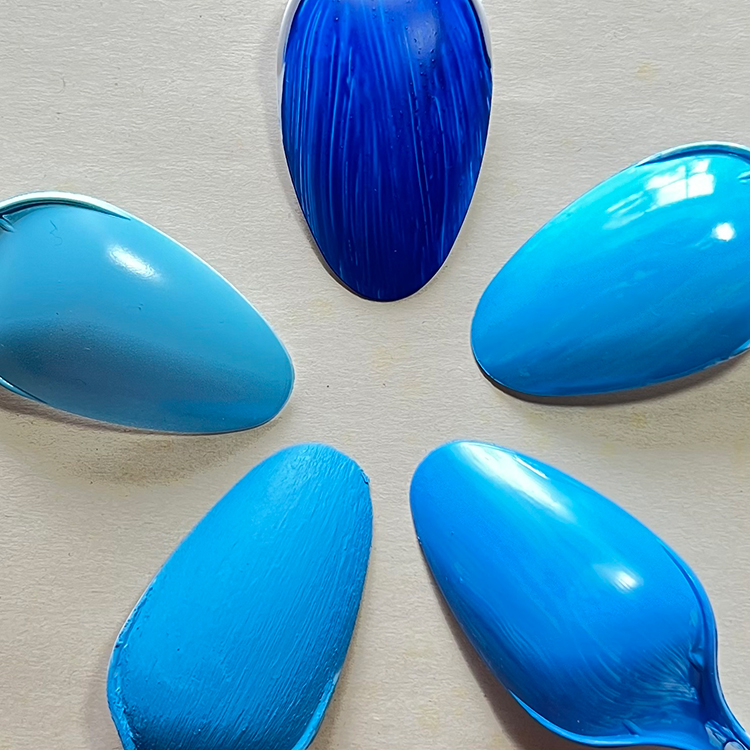
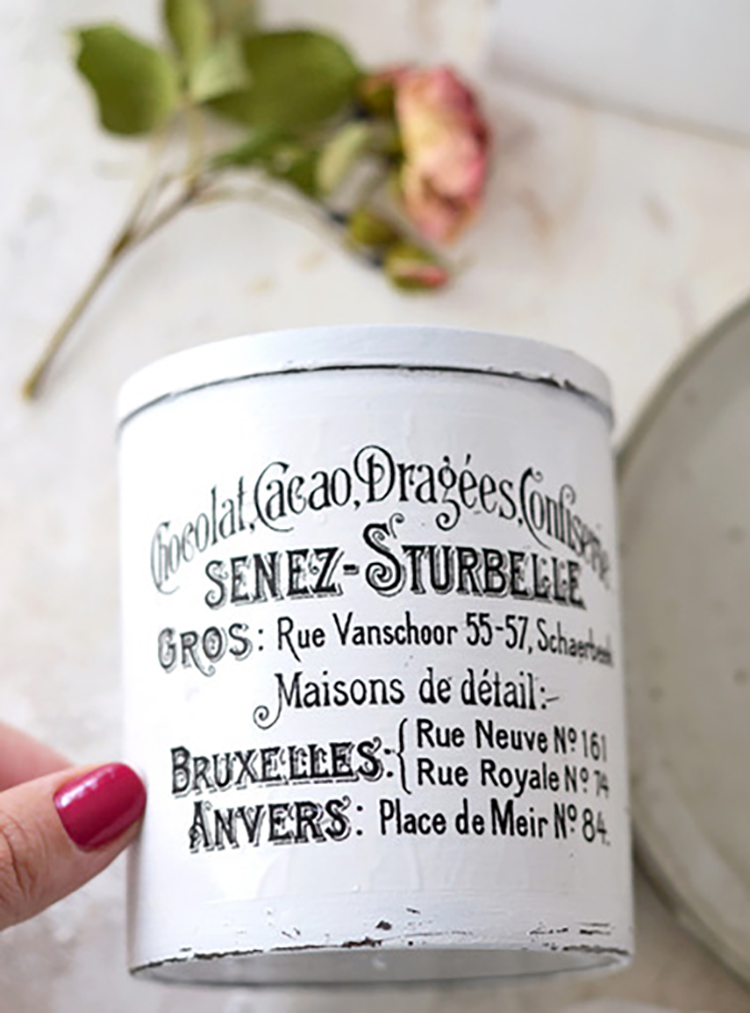


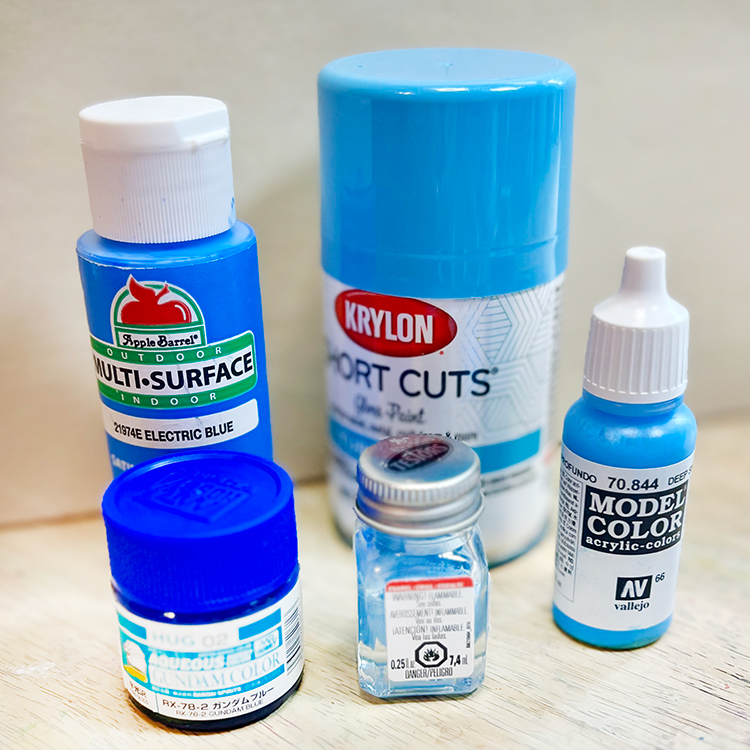
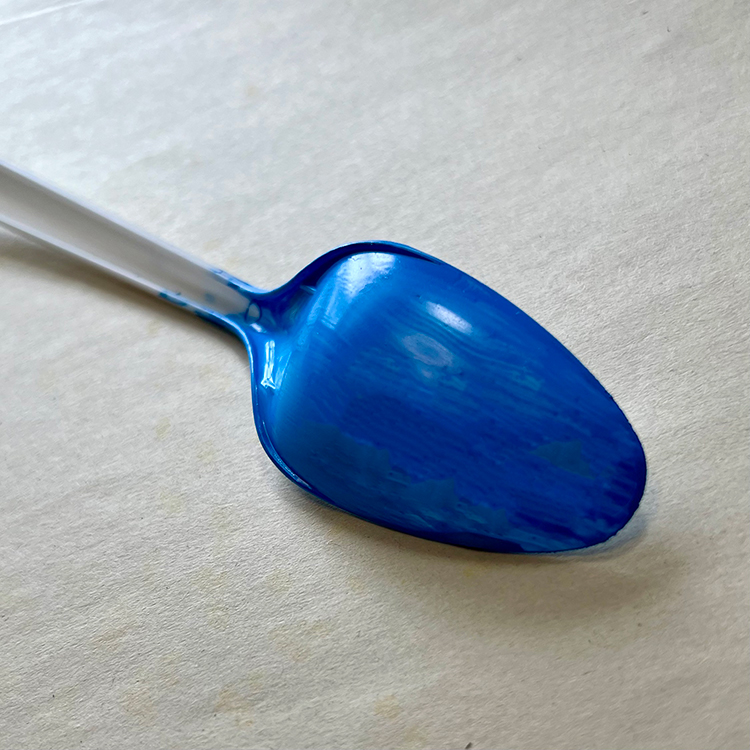
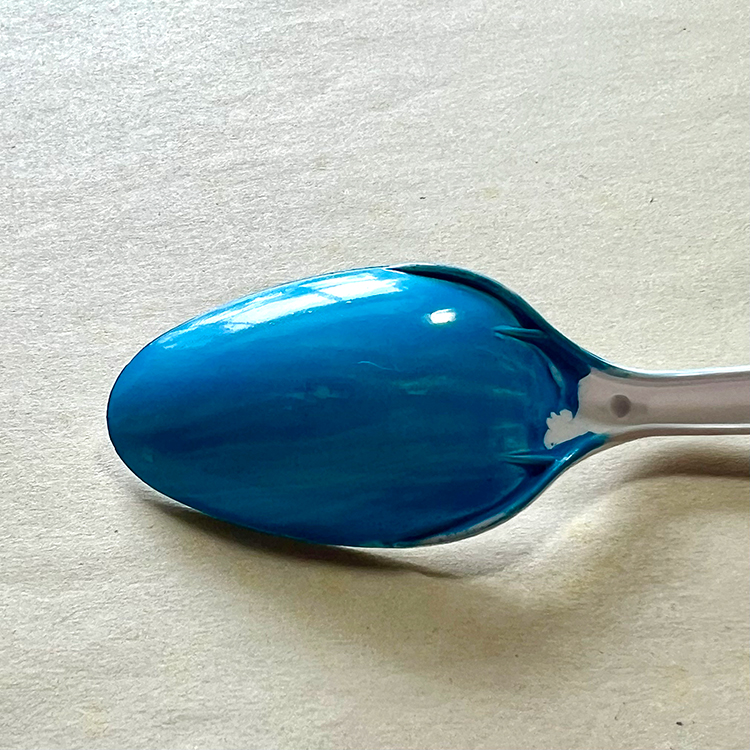

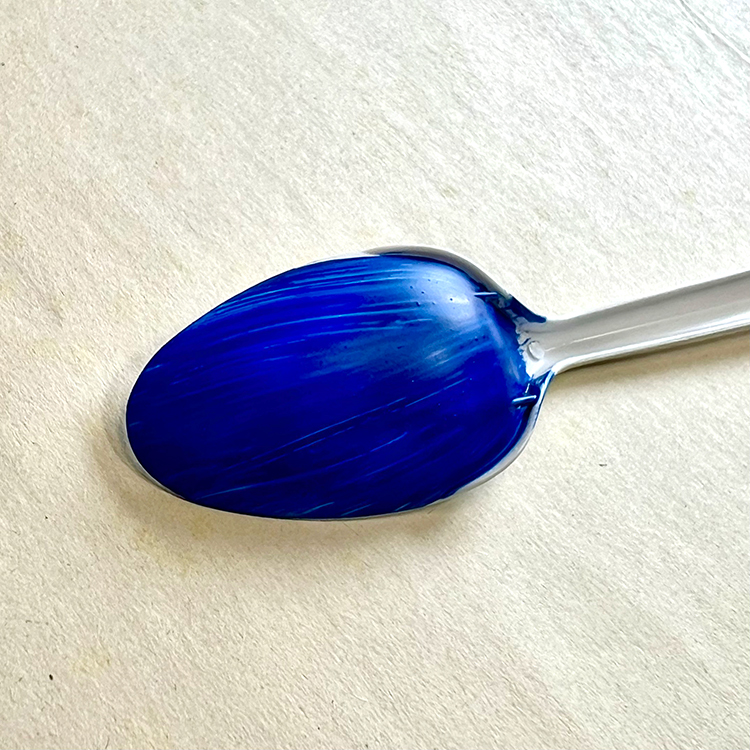
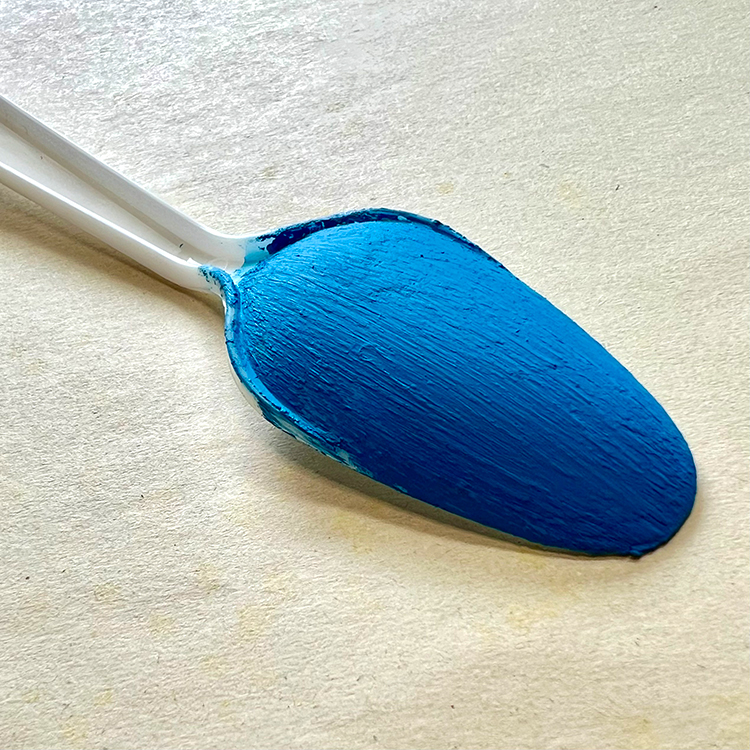
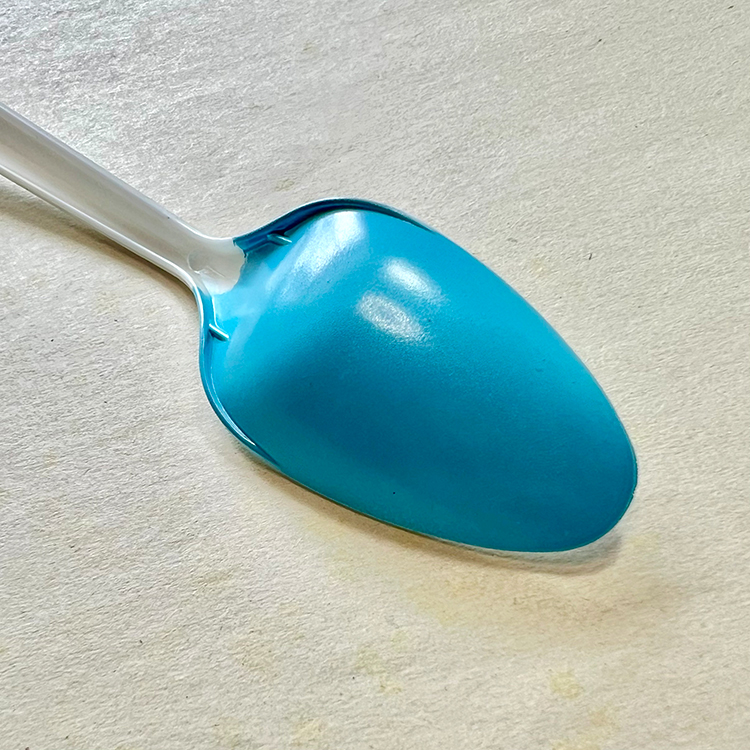

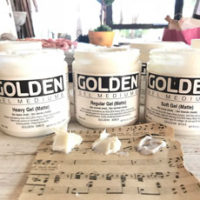

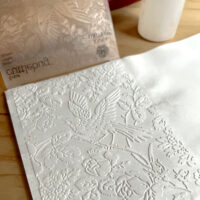




Daphne says
Love seeing all the different results from painting plastic. I especially like how much texture you got from the enamel paint from not using any thinner — love texture on many of my pieces. Thank you for this information.
Karen Watson says
We’re so glad that you found this info useful Daphne!